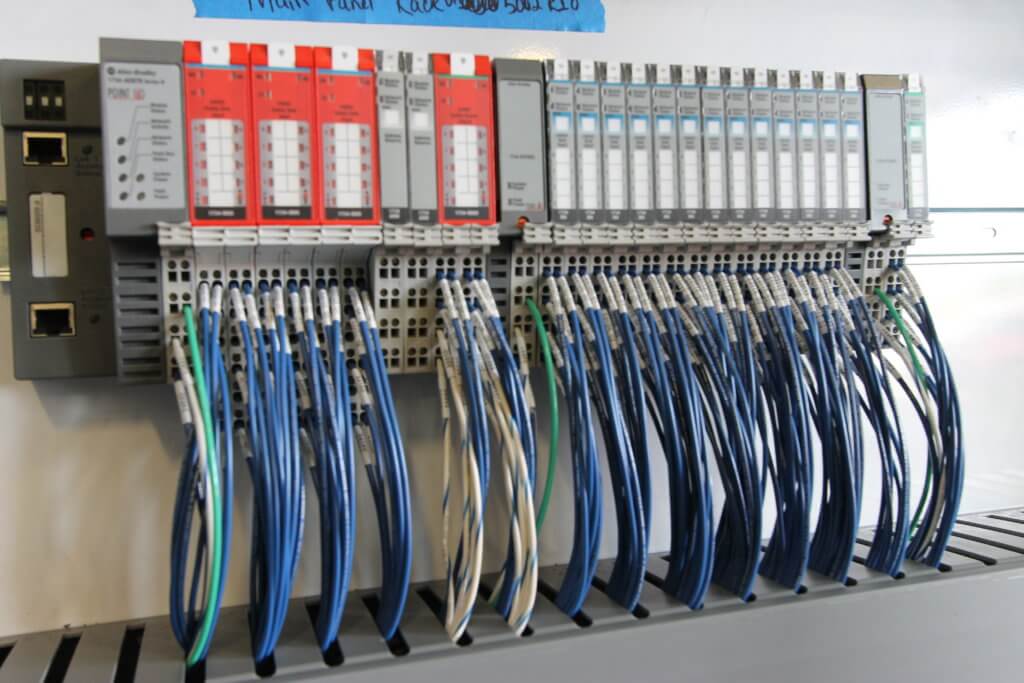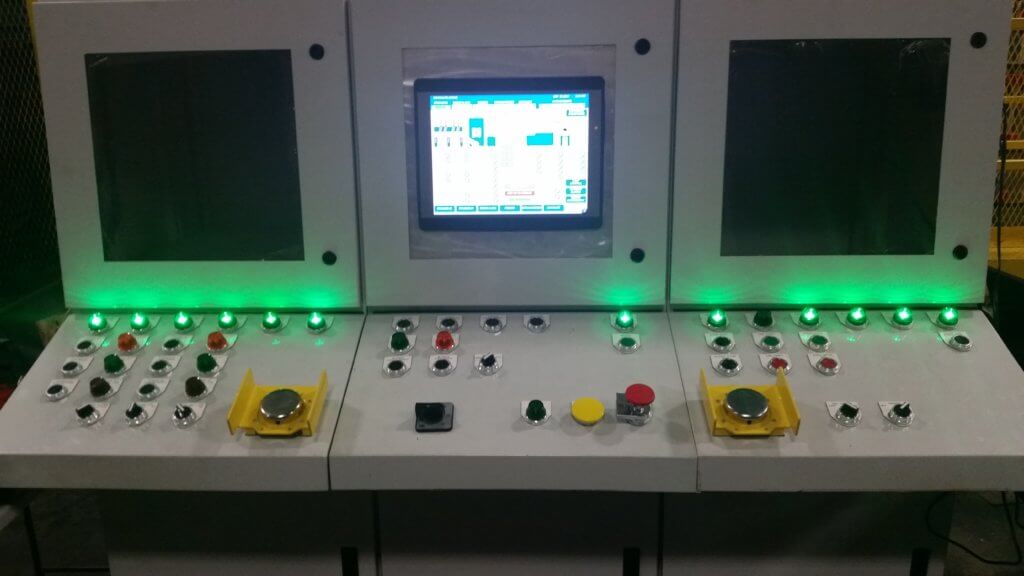Controls systems are designed to control and monitor progress through a process, assembly or conveyor. But when a controls engineer visits your facility, some terminology can be difficult to understand amongst the large range of services that many industrial companies provide. Here is a small breakdown of some of the most common controls terms.
HMI Screen
A Human-Machine Interface (HMI) is a user interface or dashboard that connects a person to a machine, system, or device. While the term can technically be applied to any screen that allows a user to interact with a device, HMI is most commonly used in the context of an industrial process.
PLC
Programmable Logic Controllers (PLCs) are small industrial computers with modular components designed to automate customized control processes. PLCs are often used in factories and industrial plants to control motors, pumps, lights, fans, circuit breakers and other machinery. (PLCs) communicate using one of several possible open or proprietary protocols, such as Ether Net/IP, Modbus, Sinec H1, Profibus, CAN open, Device Net or FOUNDATION Fieldbus. The idea to use standard Ethernet makes these systems more interoperable.
PLC Software
PLC Software is a software technology designed to turn an embedded computer into a fully functional and programmable logic controller (PLC). It combines PLCs’ discrete, PID and analog I/O control with high performing computer networking, data handling and computational capabilities. As such, software PLCs offer dependable operation, exceptionally fast and deterministic program scan durations, data table memory, unlimited user programs, and above all, an open architecture platform that allows users to connect to a wide range of I/O systems and networks among other devices.

RFID Systems
Radio-frequency identification uses electromagnetic fields to automatically identify and track tags attached to objects. The tags contain electronically stored information.
DeviceNet
DeviceNet is a digital, multi-drop network that connects and serves as a communication network between industrial controllers and I/O devices, providing users with a cost-effective network to distribute and manage simple devices throughout the architecture. DeviceNet utilizes CAN (Controller Area Network) for its data link layer, the same network technology used in automotive vehicles for communication between smart devices.
Controller Area Network (CAN)
A Controller Area Network (CAN) bus is a communication system made for vehicle intercommunication. This bus allows many microcontrollers and different types of devices to communicate with each other in real time and without a host computer. A CAN bus, unlike Ethernet, does not require any addressing schemes, as the nodes of the network use unique identifiers. This provides the nodes with information regarding the priority and the urgency of the transmitted message. These buses also continue transmission even in the case of a collision, while normal Ethernet terminates connections as soon as a collision is detected. It is a completely message-based protocol and is used mainly in vehicles.

Lee Contracting’s controls and robotics staff engineers have over 30 years of experience in the field. They have extensive knowledge of legacy systems and a comprehensive knowledge of many applications. In addition to supporting and upgrading older systems, we are fully up-to-date on the newest hardware and software platforms from all the major PLC suppliers. With our complete controls and robotics capabilities, Lee can handle the full programming of automations systems including all necessary design, development and engineering.
Call today to receive a free quote, 888.833.8776.


